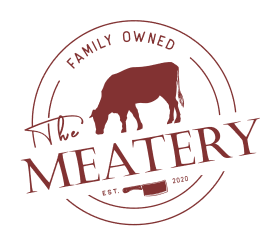Japanese Wagyu represents the epitome of beef quality worldwide, distinguished by its exceptional marbling, texture, and flavor profile. This premium meat category adheres to strict regulations and standards that ensure its superior quality and authenticity. The term "Wagyu" simply means "Japanese Cattle," however there are countless breeds of Wagyu Cattle. Lets dive into what makes Japanese Wagyu the best!
The exclusivity of genuine Japanese Wagyu stems from several key factors:
- Strict Certification: Every authentic Japanese Wagyu cattle has a unique identification number that tracks its lineage, farm origin, and quality grade
- Limited Production: Only a small number of cattle qualify as genuine Japanese Wagyu annually
- Quality Grading: Japan's sophisticated grading system evaluates marbling, color, texture, and fat quality
The grading system for Japanese Wagyu operates on a scale that considers multiple factors:
- Yield Grade (A-C)
- Quality Grade (1-5)
- Beef Marbling Score (BMS 1-12)
The most coveted grade, A5, represents the pinnacle of Wagyu quality, featuring exceptional marbling, ideal fat distribution, and superior meat color. This meticulous attention to quality control and grading ensures that Japanese Wagyu maintains its status as the world's most prestigious beef.
Wagyu Vs Other Beef Types
When comparing Japanese Wagyu to other beef varieties, several distinctive characteristics become apparent. The most notable difference lies in the meat's intramuscular fat content and distribution, known as marbling. While premium USDA Prime beef typically has a marbling score of 4-5, Japanese Wagyu regularly achieves scores of 8-12.
Key differentiating factors include:
- Fat Composition: Wagyu contains a higher percentage of monounsaturated fats and omega-3 fatty acids
- Texture: Significantly more tender than conventional beef due to fine marbling
- Melting Point: Wagyu fat melts at a lower temperature (around 77°F/25°C) compared to other beef varieties
Comparison with other premium beef types:
| Characteristic | Japanese Wagyu | USDA Prime | Angus |
|---|---|---|---|
| Marbling Score | 8-12 | 4-5 | 3-4 |
What do they feed wagyu cows?
The feeding regimen for Japanese Wagyu cattle is carefully controlled and specifically designed to promote optimal fat marbling and meat quality. The diet typically progresses through several stages throughout the animal's life:
Early Stage (0-7 months):
- Mother's milk
- High-quality grass
- Special starter feed
Development Stage (8-18 months):
- High-quality roughage
- Rice straw
- Specially formulated concentrate feed
Finishing Stage (19-30 months):
- Proprietary feed mixtures including:
- Rice straw
- Whole crop silage
- Grain concentrate
- Vitamins and minerals
What Does Wagyu Beef Taste Like?
Japanese Wagyu offers a unique taste experience that sets it apart from all other beef varieties. The flavor profile is characterized by its complexity and depth, creating what many describe as a "melt-in-your-mouth" sensation.
Key taste characteristics include:
- Rich, buttery flavor
- Sweet umami notes
- Tender, velvety texture
- Clean, subtle aftertaste
Wagyu History And Culture
The history of Japanese Wagyu dates back several centuries, deeply intertwined with Japan's cultural and agricultural development. Originally, these cattle were used as draft animals for agriculture, but their potential for superior meat production was recognized during the Meiji Era (1868-1912).
Key historical milestones:
- 1919: First Wagyu cattle registration system established
- 1944: Government declares Wagyu a protected breed
- 1997: Export ban on live Wagyu cattle implemented
The cultural significance of Wagyu in Japan extends beyond its culinary value. It represents:
- Agricultural heritage
- Dedication to craftsmanship
- National pride
- Economic importance
Recipes And Pairings
When preparing Japanese Wagyu, simplicity is key to highlighting its natural flavors. When prepping, use light salt and pepper to truly bring out the meats natural flavor. You can also pair rich Wagyu with plenty of amazing beverages.
Recommended wine pairings:
- Full-bodied red wines (Cabernet Sauvignon, Malbec)
- Premium sake
- Bold Bordeaux blends
Source Regions And Breeds
Japanese Wagyu comes from several distinct regions, each producing beef with unique characteristics. The most renowned regions include:
-
Kagoshima Prefecture:
- Known for intense marbling
- Sweet, rich flavor profile
-
Miyazaki Prefecture:
- High-quality marbling
- Bright red meat color
-
Kobe (Hyogo Prefecture):
- World-famous brand
- Exceptional tenderness
Are wagyu cows fed beer?
The notion that Wagyu cattle are routinely fed beer is largely a myth, though there is some historical context to this belief. While some farmers have experimented with beer as a feed supplement, it is not a standard practice in Japanese Wagyu production as more human standards have become the normality in Wagyu Production.
Facts about the beer myth:
- Not a widespread or traditional practice
- No scientific evidence supporting benefits
- Originated from isolated experimental cases
Instead, farmers focus on proven feeding methods:
- Balanced nutrition
- High-quality feed ingredients
- Careful monitoring of diet composition
- Creating a Stress-free environment
Japanese Wagyu stands unrivaled in the world of premium beef, offering an unparalleled culinary experience through its unmatched marbling, delicate texture, and luxurious flavor. The meticulous care in raising these cattle, from their specialized diets to stringent grading standards, ensures that genuine Japanese Wagyu remains an exclusive and celebrated delicacy. Embracing the rich history and culture that surround it, savoring Japanese Wagyu not only delights the palate but connects consumers to a tradition deeply rooted in excellence and craftsmanship.









